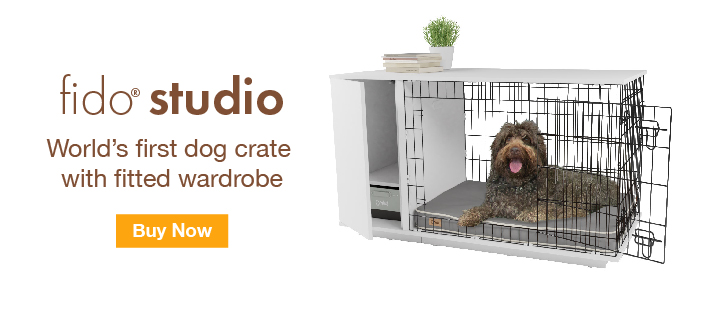Every pet parent is occasionally guilty of giving in to their beloved pooch when it comes to an extra treat or two. Whether it’s a few sneaky snacks under the table or leftovers from the night before (dog-friendly, of course), those puppy eyes can be far too irresistible to refuse. But, just like us, feeding Fido too many treats can quickly catch up and do more harm than good. Prevention always beats cure and ensuring your dog remains at a healthy weight is a part of responsible dog ownership. But, if your dog is overweight, this can, fortunately, be reversed and your canine companion can be on their way to living the lifestyle they deserve.
Is your dog a healthy weight?
Being underweight or overweight for a dog can be detrimental to their health. Obesity can lead to problems such as diabetes, heart disease, high blood pressure, difficulty breathing and an increased risk of cancer. An underweight dog can struggle with recovery following illness, hair loss, decreased energy and hormonal imbalances to name a few. What both of these have in common is that their quality of life will be drastically reduced.
Appearance differs between dog breeds, with some such as the Italian greyhound and Ibizan hound having more of a naturally slender look. Other breeds such as the basset hound golden retriever and Labrador retriever are more prone to obesity. But, should you be concerned about your pup’s weight, following these steps will provide you with an answer.
- Check your dog’s ribs. You should be able to feel them fairly easily, but you should not be able to see them clearly from a distance. There should only be a very thin layer of fat covering them. This visual check is trickier on shaggy dogs, so carry out the check when they’re wet, if possible.
- Inspect your dog from above. Their waist should be clearly visible, but you should not be able to see any protruding bones.
- Look at your dog from the side. Your dog’s abdomen should be tucked up, and there shouldn’t be any excess fat hanging down.
- An obvious sign of an overweight dog is an excess of fat covering their ribs or tail bones. This will be visibly apparent, but you can also check by feeling with your hands. Something to note is that female dogs are more susceptible to obesity than males.
How to reduce your dog’s weight
We love our dogs no matter how they look, but if your pet pooch is carrying a few extra pounds, now is the time to start the doggie diet. Ultimately, when it comes to helping your overweight dog lose weight, diet and exercise are key.
Reduce your dog’s food intake
Before changing your dog’s diet, be sure to consult your veterinarian to ensure it’s appropriate for your pet. Once you’ve been given the all-clear, you can start by reducing the amount of food you’re feeding your dog. Never reduce their meal sizes drastically - dogs are not built for crash diets.
Quite often, the problem turns out to be all the extra titbits your dog has been eating. Be firm in saying no to scraps from the table, odds and ends from the chopping board, unfinished kids’ dinners, and no crisps or biscuits when the kids are snacking. You also need to make sure your dog is not stealing food when unsupervised. Some make a habit of this, and it can be hard to dissuade them, so you’ll need to make sure there’s nothing within reach. Cut out these sneaky treats and more often than not, you’ll find Fido’s weight goes down without any more intervention necessary.
Also, be sure the rest of your household knows that you’re trying to reduce your dog’s weight. Consistency is key and everyone needs to make a joint effort for everyone to reap the rewards of a happier and healthier dog.
Exercise, exercise and more exercise
Different breeds need varying amounts of exercise but your veterinarian will be able to provide you with how often your pup should be getting out based on their size, age and current activity level.
More exercise goes hand in hand with controlling their food intake when you’re trying to reduce their weight. Make your dog walks more exciting by exploring new places or meeting up with a puppy playdate for a game of fetch. Occasionally changing your route will make walks more exciting for both you and your pet and your adventures will hardly seem a chore.
If you’re able to walk your dog off-lead in a safe place then this is great for getting in more exercise. You can practice recall or play a game of frisbee for a couple of suggestions. Just ensure that any treats used as a reward are tasty but low-calorie.
Swimming is another very effective way of getting the extra weight off. Did you know that a five-minute swim can be the equivalent of a five-mile walk on a lead? Swimming also helps to increase your dog’s strength, as well as lowering body fat and increasing the flexibility in their joints.

Playtime with your dog is a perfect way to get in their daily dose of exercise.
Omlet and your dog’s health
At Omlet, we know the importance of having both healthy and happy dogs. With our range of dog toys for mental and physical stimulation to dog leads for long walks, our products have been innovatively designed to put pup first, while making pet parenting a breeze for you too.





Comments
Gopi, 6 February 2020
Awesome article, Thanks for sharing!
Roxane, 23 January 2019
Very informative and interesting. although I've fed my other dogs raw meat, I've always wondered if it was enough food and nutrients.